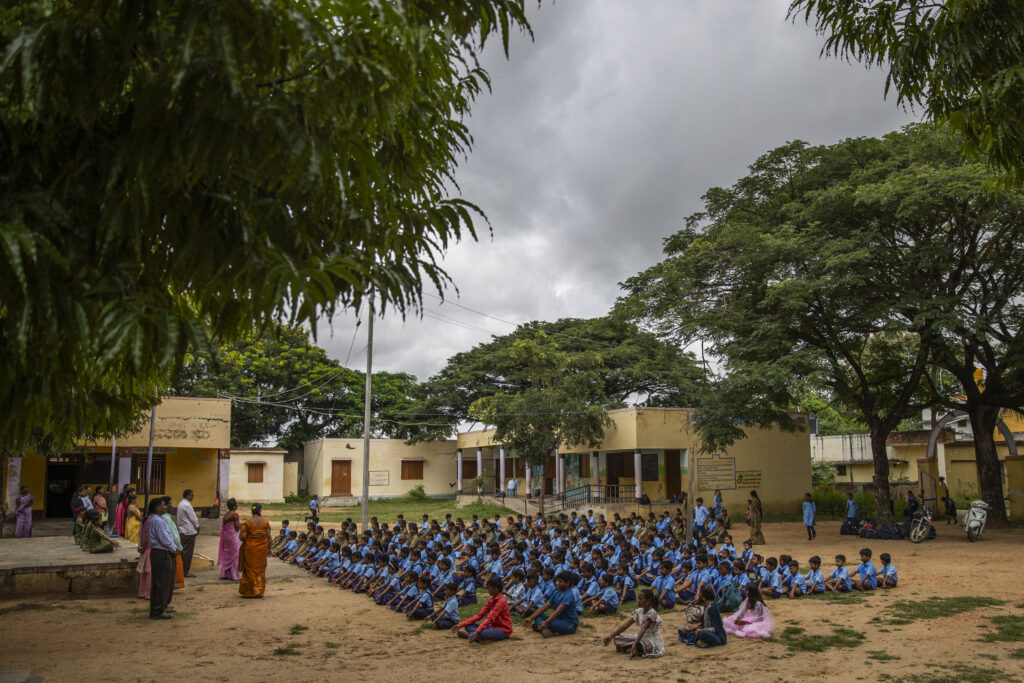Various initiatives are in the process of being implemented in several African countries with the goal to develop a solid foundation that propagates awareness of digital literacy and makes transitioning into the tech space easier for young adults.
India, too, is thinking on similar lines with the NITI Aayog publishing a Report titled “Strategy for New India @75” inter-alia that highlights the need for India to eliminate its ‘Digital Divide’ by 2022-23.
Client Brief
The business enterprise is an industry organisation that represents the global interests of mobile network operators. It aims to promote innovation in the use of mobile technology to address socio-economic challenges across the globe.
The organisation is implementing a digital literacy programme in India and Ghana using video materials that aim to educate the youth on basic digital literacy via learning skills like how to Whatsapp and more. The objective of the engagement with Sattva Consulting was to assess the effectiveness of the training programme and its impact on the targeted beneficiaries. The recommendations provided by Sattva Consulting were used to improve the training materials, approach – and delivery.
Sattva’s Approach
- A mixed methods approach with both quantitative and qualitative data collection was undertaken for the study.
- A total of 200 beneficiaries in India and 150 beneficiaries in Ghana were selected for the study.
- Different methods of data collection such as short feedback surveys on training materials, observation visits, training sessions, focus group discussions, quantitative remote surveys, and qualitative remote interviews were deployed in this study.
People and Expertise
The study was implemented by the Evidence and MEL unit of Sattva with a team of experienced lean evaluators in remote data collection.
Beneficiary Profile
- India: Two categories of beneficiaries were included in the study.
- Members of SHG groups in rural areas with limited educational qualification, income levels, limited ownership of phones and knowledge of the internet.
- Customers of one of the largest mobile network operators who were based out of rural and urban areas with better educational qualifications, income levels, high ownership of phones and better knowledge of the internet than their rural counterparts.
- Ghana: Urban and rural youth with high ownership of phones, higher knowledge of the internet, and educational qualification of minimum secondary level and higher were included in the study.
The Methodology
The Kirkpatrick framework, a commonly used framework to evaluate training programmes, was adapted to include the predefined key evaluation questions. A study was conducted using various data collection tools as mentioned above to derive the insights that emerged from the responses to key evaluation questions, pre-defined by the client.
Key Takeaways
While training materials assessed by Sattva were largely effective in imparting digital skills, certain gaps remained. For instance, Sattva found a need to incorporate content that is contextualised to local communities. Also, there was a need to include a range of modules in the training materials that were suitable to beneficiaries and could be used by people who are in varying different stages of digital literacy skills (such as basic modules for people less familiar with digital skills). The training approaches also needed to be tailormade to target the beneficiaries more specifically and their stage of growth in digital skills. Sattva found that irrespective of gender, phone ownership was a key factor that influenced learning from the training.
Project Deliverables
Key insights and recommendations from this study were presented through a presentation – to the larger programme team of the organisation including its directors and associate directors who are involved in imparting digital literacy across the world.
Sattva’s Impact and Voices from the Project
The Director of market engagement of the organisation found Sattva’s insights very helpful and wished to share some of the learnings with their grantees engaged in digital literacy programmes in other countries.
She said, “We would love to share some of these learnings with grantees doing digital literacy in other parts.”




